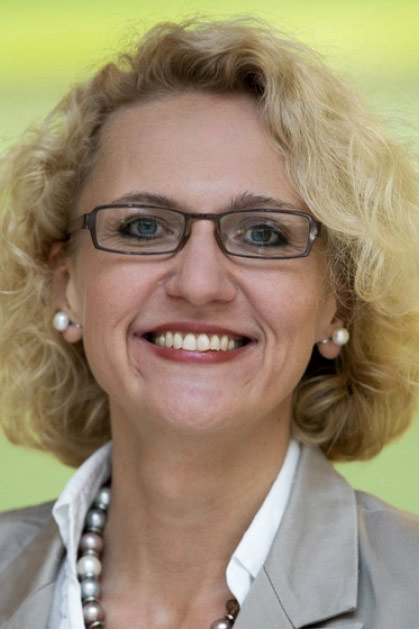


|
||
|
||
This past week offered a striking illustration of the pace and scale at which our shared orbital environment is evolving. In less than 24 hours, six rockets were launched from different parts of the globe, each contributing to the rapid expansion of low Earth orbit (LEO) infrastructure. China deployed a new set of Guowang satellites, while SpaceX launched two batches of Starlink satellites—one from Vandenberg in California and another from Cape Canaveral in Florida. United Launch Alliance (ULA) successfully placed Amazon’s Kuiper satellites into orbit, and Arianespace employed its new Vega-C rocket to deliver a non-broadband satellite to LEO. Meanwhile, Firefly Aerospace attempted to send a Lockheed Martin satellite into orbit using its Alpha rocket, though the mission ultimately failed to reach its intended trajectory.
As Space.com reported, “On Monday, four rockets launched from four different sites—one in China, two in Florida, and one in California—within a span of approximately 6.5 hours. All of them were successful, and all were devoted to building out LEO broadband constellations”. This extraordinary sequence of events highlights not only the impressive technological capabilities of both commercial and national space actors but also the intensifying regulatory challenges involved in managing this increasingly congested and strategically vital layer of global digital infrastructure.
The extraordinary launch activity of this past week underscores the accelerating “gold rush” for outer space—a modern race for dominance in low Earth orbit. This competition for orbital capacity allocation is no longer confined to symbolic milestones or scientific missions; it now centers on the strategic deployment of digital infrastructure that will underpin global communications for decades to come. States and private corporations that are able to innovate rapidly and scale their presence in space stand to secure disproportionate control over these critical systems.
Importantly, while not all countries are active participants in this rush, none are insulated from its consequences. The growing concentration of satellites and the rising risks associated with space debris impact even those nations that merely witness the passage of orbital assets through their airspace. The implications for sovereignty, public safety, and infrastructure resilience are becoming increasingly difficult to ignore.
The governance of space-based digital infrastructure remains highly fragmented. In the United States, the Federal Communications Commission (FCC) exercises significant control. On 28 April 2025, the FCC adopted reforms that opened a 600 MHz portion of the 37 GHz band to commercial access, aimed at improving spectrum sharing between geostationary (GEO) and LEO satellite systems. The FCC also initiated a review of outdated regulations from the 1990s that industry leaders argue hinder innovation.
China, by contrast, has announced a national Space Traffic Management (STM) initiative to bring order to its expanding LEO operations. According to the China National Space Administration (CNSA), the country plans to manufacture up to 5,000 satellites annually by the end of 2025. The newly created Commercial Space Innovation Alliance seeks to integrate private-sector dynamism with public-sector oversight and research, bolstering China’s standing in global space governance.
By the end of 2024, over 2,500 new objects had entered the Earth’s orbits. The European Space Agency (ESA) projects this figure could reach 50,000 by 2050. The rules currently in place—primarily those developed by the International Telecommunication Union (ITU)—are inadequate to manage the negative implications of this exponential growth. Critiques focus on outdated principles (e.g., “first come, first served”), the absence of effective enforcement mechanisms, and the slow pace of international regulatory reform.
In Europe, there is a growing sense of collective action as countries work together to create a more independent and secure digital infrastructure. Projects like IRIS², the European Union’s ambitious plan for its own satellite communications network, are striving to build a future where Europe is less reliant on external powers for essential digital connectivity. This project represents a bold step toward ensuring European sovereignty in space-based communications, with an emphasis on security and resilience. At the same time, the Eutelsat OneWeb initiative, backed by the UK, India, and several other countries, is working to provide global broadband access, particularly to underserved and remote regions.
While these efforts are commendable, they face the significant challenge of competing with powerful American corporations, such as Amazon’s Kuiper project and SpaceX’s Starlink, which dominate the global space market. Despite the promising potential of these European projects, both IRIS² and OneWeb face serious hurdles that could slow their progress. These include technical challenges in deploying satellite networks, the financial burden of large-scale infrastructure projects, and the political complexities of securing international collaboration. The future of these initiatives will depend largely on the ongoing negotiations between EU member states and private industry. It will require careful diplomacy, strong leadership, and the fostering of innovative partnerships to overcome the obstacles that lie ahead and realize the ambition of an independent, secure, and sustainable European satellite infrastructure.
These developments lend new urgency to upcoming multilateral processes, notably the WSIS+20 Summit, scheduled for 7-11 July 2025 in Geneva. Organized by the ITU in cooperation with UNESCO, UNDP, and UNCTAD, WSIS+20 will shape the next phase of global governance for digital infrastructure—both terrestrial and orbital.
The summit represents a pivotal moment for addressing issues ranging from spectrum management and satellite governance to data security and digital inclusion. It also provides an opportunity for all countries, participating through ES, EU or other dedicated structures, to help ensure a sustainable and equitable regulatory regime for outer space. Civil society and academic institutions are also increasingly advocating for fair and just access to the Internet and outer space technologies. Satellite systems must be governed in a way that upholds inclusivity, avoids monopolization by a few dominant actors, and supports the Sustainable Development Goals (SDGs). Multistakeholder governance—the active inclusion of governments, industry, academia, and civil society—is essential to achieve this goal. We must avoid replicating a new “Wild West” in space and instead work toward a model of shared stewardship and responsible innovation.
Satellite technology holds immense promise: from expanding global connectivity to enabling education, environmental monitoring, and disaster response. But this promise can only be fulfilled if space infrastructure is governed effectively and equitably. The record-setting launches of this past week illustrate just how quickly space is becoming critical digital infrastructure. As we approach WSIS+20, the global community must rise to the occasion and develop a governance model that reflects the complex, interdependent, and high-stakes nature of the orbital age.
In the lead-up to the summit, there is a need to incorporate critical policy considerations, as highlighted in the WSIS Recommendations from the Summer School on Internet Governance and International Law, hosted last year as part of a dedicated LEOs research project under the Internet Society Foundation Research programme. Key among these is capitalising on LEO opportunities, ensuring that governmental actions leverage LEO satellite broadband to bridge connectivity gaps without allowing monopolistic control by a few actors. Strengthening regulatory frameworks in space law, cybersecurity, and data governance will be crucial for safeguarding national interests. This is the time for policymakers to engage in multilateral dialogues—such as those held at the IGF, ITU, and COPUOS—to shape an equitable and sustainable digital future. Transparent practices, interoperability between satellite and terrestrial systems, and the advocacy of open internet standards will be essential in maintaining an inclusive and resilient digital infrastructure. Investing in local Internet Exchange Points (IXPs) and shared ground infrastructure can also foster local connectivity, improve network resilience, and reduce latency.
The WSIS+20 Summit, therefore, represents not just a platform for dialogue but an opportunity to define how global governance for outer space and digital infrastructure should evolve. With inputs such as those articulated in the SSIGIL report on the evolving landscape of space governance, the international community can work together to develop sustainable and cooperative frameworks that ensure space remains a shared, secure, and accessible domain for all communities.
Sponsored byWhoisXML API

Sponsored byVerisign

Sponsored byIPv4.Global

Sponsored byDNIB.com

Sponsored byCSC

Sponsored byVerisign

Sponsored byRadix
